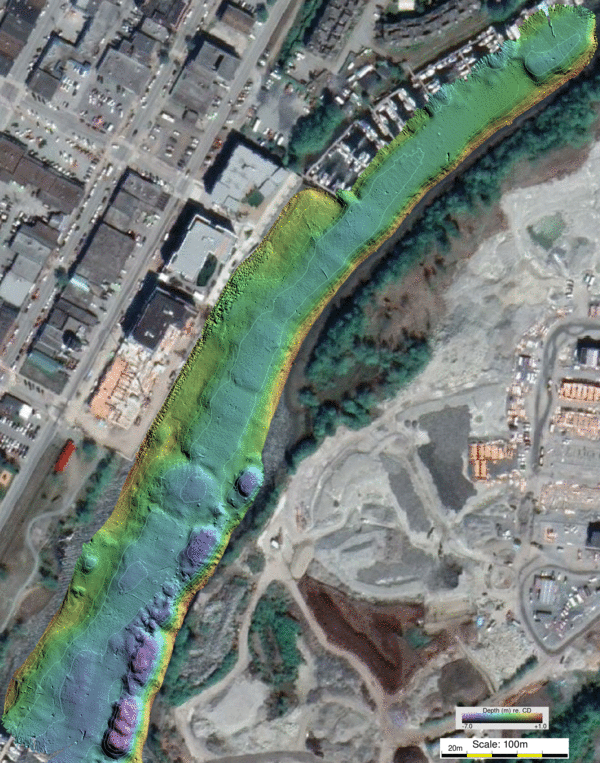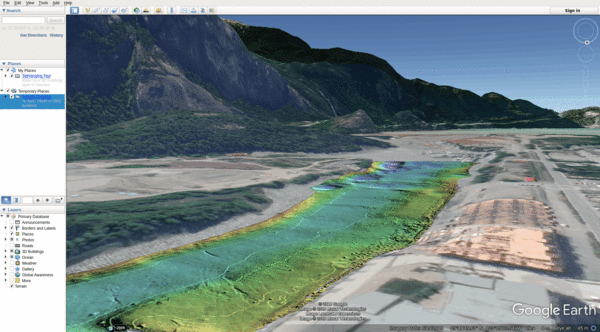
0.1m resolution bathymetic model aligned with wall. The
image is created from three swaths of overlapping data.
There is a small data gap on the NE end of the wall. This is a
result of the sonar mistracking where the pilings echo is much
stronger than the adjacent muddy seafloor

EM2040 backscatter (+/-80 deg) from line closest to pilings.
This illustrates how the targets show up particularly clearly by
their cast shadow. Note the shadow cast direction
changed from side to side of the swath. Where the targets are
right under the vessel, no shadow is cast.
The black band adjacent to the pilings in the area in which the
sonar is mistracking (these correspond to the holes in the
bathymetric model).

EM2040 backscatter (+/-80 deg) from next outboard line
By stepping away, the targets actually show up more clearly as the
shadows are longer.




